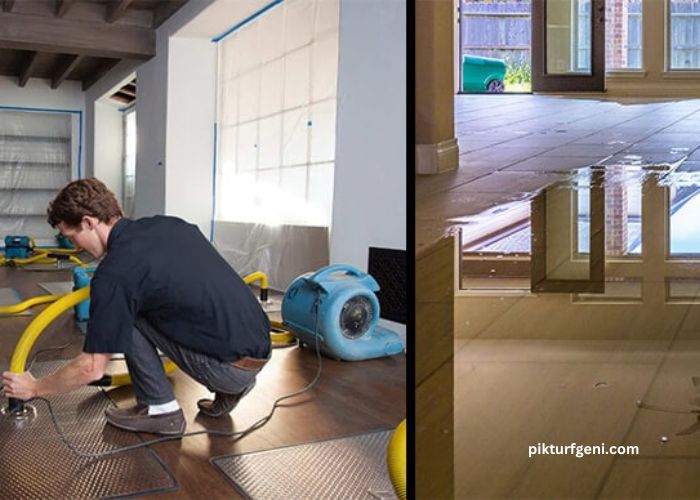Water damage is one of the most common and destructive problems homeowners face. If not dealt with right away, water damage from a burst pipe, flooding, or a leaking roof can seriously harm a house. In order to avoid long-term structural problems, mold growth, and health risks, water damage restoration must be done quickly. In order to help homeowners understand what needs to be done and how to effectively protect their property, we will examine the essential steps in water damage restoration in this article.
-
Determine The Damage’s Scope
The first step in the restoration process for water damage is assessing the extent of the damage. As soon as you notice water intrusion, it’s important to act quickly and inspect all areas of your home that may have been affected.
If the water damage is extensive or if there are electrical risks, it’s crucial to call a professional water damage restoration service immediately. For professional water damage restoration in Greenville, it’s essential to contact experienced experts who can quickly assess the damage and begin the necessary repairs to restore your home to its original condition. A skilled technician will have the equipment and know-how necessary to carry out a comprehensive examination and pinpoint every area in need of repair.
-
Stop The Water Source
Before starting the restoration process, it is essential to stop the flow of water. Turn off the water supply to your house if the damage was brought on by a burst pipe or other plumbing problem. If flooding is the source, try to move any valuables or important items away from the water and prevent it from spreading further.
If the situation is dangerous, such as flooding from a natural disaster or storm, it’s crucial to prioritize safety. Ensure that your electricity is turned off to avoid electrocution and that you and your family members are in a safe area.
-
Remove Standing Water
Once the water source has been shut off, the next step is to remove any standing water from the affected areas. The longer the water sits, the greater the potential for long-term damage. Using pumps, wet vacuums, or mops, begin removing the water as soon as possible.
In some cases, it may be necessary to hire professional water removal services, especially if the water is deep or if the damage is widespread. Professionals have powerful equipment that can remove large amounts of water quickly and efficiently.
-
Dry And Dehumidify The Area
After standing water has been removed, it’s important to dry out the affected areas to prevent further damage. This involves using fans, dehumidifiers, and air movers to reduce moisture levels in the air and speed up the drying process. Proper ventilation is also critical, so open windows or doors when possible to promote airflow.
This step is crucial to preventing mold growth, which thrives in damp environments. Remember that depending on the severity of the damage, it may take a few days for the area to dry completely. If mold is present, it may require additional treatment to remove it safely.
-
Inspect And Clean Affected Areas
Once the area is dry, the next step is to inspect the materials and structures that were affected by the water. Check the condition of drywall, insulation, carpeting, wood, and other materials. If any materials are severely damaged or compromised by water, they will need to be replaced.
Mold and bacteria can start to grow quickly in damp conditions, so it’s important to disinfect surfaces and clean any salvageable items. Professional water damage restoration services often use specialized cleaning agents to remove contaminants and ensure that your home is safe and hygienic.
-
Repair And Restore Your Home
After the area is dry and clean, it’s time for repairs. This may involve replacing drywall, flooring, insulation, or even structural repairs to the foundation, walls, or roof. If any appliances or electrical systems are affected, they should be inspected and repaired by professionals to ensure they are functioning correctly.
Restoration can also include cosmetic work, such as painting, retiling, or refinishing wood floors, to restore the appearance of the affected areas. The structural and cosmetic repairs required to restore your home to its original state can be handled by a qualified restoration team.
Conclusion
Water damage can be devastating, but with prompt action and the right steps, you can restore your home and prevent further issues. Important steps in the restoration process include figuring out how bad the damage is, turning off the water source, getting rid of any standing water, drying and dehumidifying the area, cleaning up the damage, and making any repairs that are needed.
